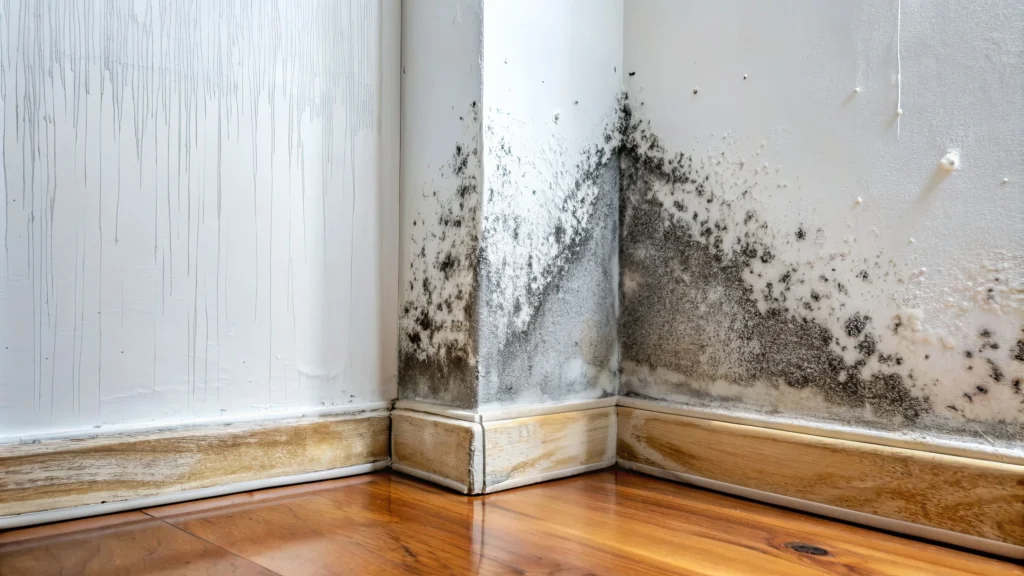A flooded basement can be a nightmare for any homeowner or business. In the UK, flooding has become an increasing concern due to rising sea levels and more frequent heavy rainfall events. According to the Environment Agency, over 5 million properties in England alone are at risk of flooding. If you ever find yourself dealing with a basement flood, knowing how to respond quickly and effectively can help minimise damage and reduce costs.
Understanding the extent of basement flood damage
A flooded basement can cause significant damage beyond just water-soaked belongings. The longer water remains, the worse the damage becomes. Some of the key risks include:
- Structural damage: Water can weaken foundations, cause walls to crack, and lead to expensive repairs.
- Mould growth: Mould can start forming within 24-48 hours, posing serious health risks.
- Electrical hazards: If water reaches electrical outlets or wiring, there is a risk of electrocution.
- Contaminated water: Depending on the source, floodwater may contain harmful bacteria, chemicals, or sewage.
What to do when your basement floods
Ensure safety first
Before stepping into a flooded basement, assess the risks:
- If water levels are high, do not enter until the electricity has been shut off.
- If you suspect contaminated water, wear protective gear such as gloves, boots, and a face mask.
- Avoid contact with standing water if you are unsure whether electrical outlets are submerged.
Determine the cause of the flooding
Identifying the source of the flood is crucial in preventing further water ingress. Common causes include:
- Heavy rainfall causing groundwater flooding.
- Blocked or failed drainage systems.
- Burst pipes or faulty plumbing.
- Sump pump failures.
- River or coastal flooding in high-risk areas.
If the flooding is due to external sources such as heavy rainfall or river flooding, consult the Government’s flood warning service to stay updated.
Remove water as quickly as possible
Acting swiftly will reduce long-term damage. The best methods depend on the severity of the flooding:
- For small floods, use a wet/dry vacuum, buckets, or mops.
- For larger floods, consider renting a submersible pump to extract the water efficiently.
- Call a professional flood restoration service if the water level is significant or contaminated.
Dry the basement thoroughly
Once the standing water is removed, drying the space is essential to prevent mould and structural damage:
- Use dehumidifiers and fans to speed up the drying process.
- Open windows and doors to improve air circulation.
- Remove soaked carpets, furniture, and materials that may retain moisture.
- Check walls and insulation because plasterboard and fibreglass insulation may need replacing if they have absorbed water.
Prevent mould growth
Mould can become a serious issue after a basement flood. To prevent it:
- Disinfect all affected surfaces with an anti-microbial cleaner.
- Dry everything as quickly as possible.
- Dispose of any porous materials that have absorbed water and cannot be dried properly.
How to prevent future basement flooding
Maintain your drainage system
Regularly check and clean gutters and downspouts to ensure water is directed away from your property. Consider installing or upgrading drainage solutions, such as French drains, to improve water runoff.
Install a sump pump
A sump pump can be an effective defence against basement flooding by automatically pumping out water before it accumulates. Ensure the pump is regularly tested and has a backup battery system in case of power failure during storms.
Check your plumbing regularly
Inspect pipes and plumbing systems for leaks or damage. Pay close attention to washing machine hoses, boiler connections, and any pipes running through the basement.
Improve basement waterproofing
Consider waterproofing your basement by:
- Sealing foundation cracks with waterproof sealant.
- Installing a membrane system to prevent water penetration.
- Using water-resistant materials for walls and flooring.
Know your insurance coverage
Flood damage is not always covered by standard home insurance policies in the UK. Check your policy to see if you need additional flood insurance, especially if you live in a high-risk area.
Summary
Dealing with a flooded basement can be overwhelming, but acting quickly can prevent extensive damage and reduce repair costs. By taking proactive measures such as installing sump pumps, maintaining drainage systems, and waterproofing, you can lower the risk of flooding in the future.
If you find yourself facing a serious basement flood, calling a professional flood restoration service can ensure the job is handled safely and effectively. Whether it’s removing contaminated water, drying out the space, or preventing mould, experts can restore your basement to a safe and habitable condition.
For those at risk of future flooding, staying informed with resources from the Environment Agency and taking preventative measures can make all the difference.
Stay prepared, act fast, and protect your home from the costly effects of basement flooding.
Please reach out to one of the Ideal Response team with any questions.





















